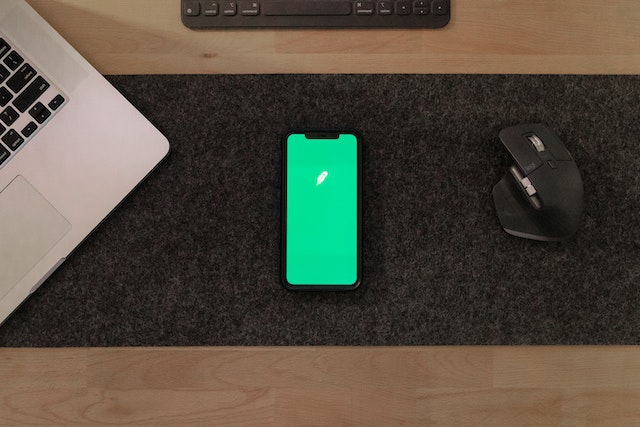Every month, about 10,000 and 30,000 new mobile applications appear in Google Play and App Store. We covered app development and different approaches to the process in the article “IOS, Android or Cross-Platform App: The Complete Guide to Mobile Development”. However, it is no longer enough to simply bring customers to the app – they need to provide a flawless user experience. People don’t want to interact with a company and uninstall an app if it doesn’t start on the first try, is generally slow, crashes, and has an awkward, confusing design. At the same time, the entrepreneur loses conversions, sales, and profit.
Due to fierce competition, businesses need to monitor many factors and constantly work on improving the performance of their applications. In this article, you will find tips on how to improve the performance of mobile applications.

Analysis of the effectiveness of the mobile application
The effectiveness of a mobile application depends on whether it will be successful, whether it will attract customers, whether it will increase profits and business. If your mobile app doesn’t provide a flawless user experience, they won’t wait for you to fix it, they’ll go to the competition. That’s why it’s important to be proactive - to find and solve performance problems before the company starts to suffer losses because of them. And below we will tell you how to identify these gaps and what to pay attention to.
The performance of a mobile application is how well it works on the device and performs the tasks assigned to it under different conditions. This can be determined by tracking certain indicators and metrics. What exactly should you monitor, what should you check? To make it easier for you to navigate, we have prepared a list of the main indicators:
1. Technical productivity:
- application launch, download and response speed;
- presence of failures, their causes and consequences;
- power consumption - how quickly the program drains the device’s battery;
- whether peak user activity causes slowdowns and crashes;
- the average and maximum amount of memory consumed by the program;
- interface freezes - causes and consequences;
- local storage consumption – how efficient the app is at updating, downloading and clearing data, especially when offline.
2. Business metrics:
- the number of downloads and deletions of the application;
- user growth rates;
- ranking in pages;
- the presence of negative reviews and low ratings;
- duration and depth of the session;
- user behaviour in the application, various interactions, engagement, how many people left and why;
- receiving leads from the application;
- sales;
- subscriptions;
- brand visibility.
3. Convenience and clarity of design:
- font readability;
- the size and visibility of call-to-action buttons, the convenience of their location;
- clarity of navigation and the rule of three clicks;
- less text, more visualization;
- moderation of the colour palette and eye-friendly contrast;
- does the main information immediately fall into the field of view.

Keeping track of all these factors is easier said than done. You need a deep understanding of how your app reacts to different conditions. Of course, you can conduct any kind of testing - but real users can interact with the application in unpredictable ways and discover completely unexpected errors. And this is where programs and services for analyzing the effectiveness of created mobile applications come to the rescue. Here are some examples:
- Google Analytics 4 allows you to track traffic for applications, conversions, audiences. Helps understand every part of the customer journey: acquisition, retention, churn and more. Provides information on the number of active users, their engagement, revenue from in-app purchases, specific user interactions (button clicks, screen views, etc.). The service is more focused on Android, but also supports iOS.
- UXCam allows you to see exactly how users interact with the application and identify the problems they face in achieving their goals. Here you can configure the recording of user interaction sessions with the application, which can be replayed and analyzed by filters (device, time, problem points, etc.). With the help of screen recordings and information about user journeys, you can quickly and accurately work out negative feedback about the application. You can also monitor crashed sessions and “injured” users in real time.
- Amplitude also allows you to understand the interaction of the audience with the program. It has dashboards with key metrics, quick access to the results of A/B tests and analytics of user journeys on multiple devices at once. Amplitude uses behavioural analytics and machine learning models to segment audiences and create personalized offers that will be useful for targeted advertising, email newsletters, ranking optimization and product recommendations.
Tips for improving the application
We have prepared some practical tips for increasing the efficiency of your mobile application. You can consider them to optimize your existing application, or if you’re just thinking about developing your own mobile application.
Minimize app launch delay
Trying to load huge amounts of all content at once during startup results in performance issues and crashes. To avoid this, identify the most essential pieces of data that the user needs to see at startup - and load them first, leaving the rest for later. All actions of your application should be performed in memory, and the application itself should run in the background. This will reduce the extra time spent on re-initializing objects, inflating the layout and rendering.
Prioritize and discard non-essential functions
Mobile devices always have limitations - in terms of memory, battery or resolution. Therefore, redundant functions can rapidly reduce productivity. Create a long-term app development roadmap and prioritize accordingly. By removing non-essential features and honing in on those that are an integral part of your app, you’ll improve its speed, responsiveness, and overall performance. After all, users don’t care about a lot of features if they get in the way of the program.
User-friendly UI/UX design of a mobile application that increases speed and saves battery
A more user-friendly app makes it less likely to be uninstalled. People expect that:
- they will easily and immediately notice the main information;
- action buttons will be large and at a sufficient distance from each other so as not to miss;
- when they need to quickly perform the main action, annoying advertisements and offers to do secondary things will not “pop out”;
- will reach their goal in no more than three clicks;
- the eyes will not get tired of the colour palette and contrast;
- the inscription on the call-to-action button will clearly explain the purpose, it is easily visible and accessible.
To speed up the application - make a minimalist design, optimize fonts, images and videos. And also save people battery power by making the user interface simple with a predominance of dark colours and shorter navigation.
Using this approach, Golden Team has developed a mobile service application that allows businesses to choose the best option easily and conveniently from many logistics companies. And track and manage transportation. We created a convenient and understandable design, ensured a high speed of loading and responsiveness. It was a complex software solution, but customized development provides more opportunities and allows even in such cases to make the mobile application effective an
Optimize images and videos
Visuals should be of good quality, but if you want to improve your app’s performance, you need to compress, resize, format, and cache them. Caching is a method of retrieving a visual element. It involves downloading files to the device’s memory, which means that images or videos do not need to be downloaded from the network each time for viewing. In this way, you reduce the loading time and allow you to interact with the content in offline mode.
Create an offline mode
This is how you provide users with the ability to access and save data when they lose their network connection. Especially if this moment caught them in the middle of an action. They will continue to use the app rather than exiting, which can lead to negative opinion and rating, and therefore more user churn.
Improving the performance of mobile applications is a vital and complex continuous process for growth and development. The Golden Team knows the modern requirements for the performance of applications, understands the problems and knows how to overcome them. Therefore, we will help you achieve true application optimization. We can improve your mobile application or if you are just planning to develop it and want to do everything right right away - we can take all these points into account right away. Write to us and we will contact you, analyse your needs and tasks, calculate the cost of developing a mobile application or its optimization - and offer the most profitable solution for you.